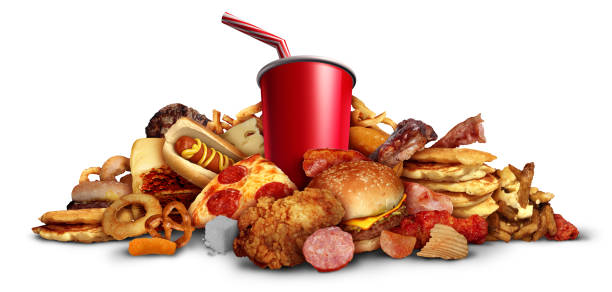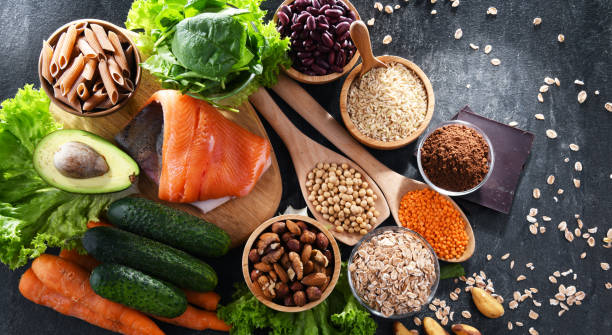In our quest for a toned and trim midsection, tackling lower belly fat is often one of the most challenging tasks. It seems to stubbornly cling to our bodies, even when we’re diligently following exercise routines and watching our diet. So, what exactly causes this stubborn fat to accumulate in the lower belly area? Let’s delve into the science behind it.
Understanding the Science Behind Lower Belly Fat
Lower belly fat is not just a matter of appearance; it can also be an indicator of underlying health issues. Understanding the factors that contribute to its development is crucial in our journey towards a flatter belly.
When it comes to targeting lower belly fat, it’s essential to consider the role of genetics. Some individuals may be genetically predisposed to storing fat in the lower abdominal area, making it more challenging to lose compared to fat stored in other parts of the body. While genetics play a significant role, lifestyle factors such as diet and exercise still play a crucial part in managing lower belly fat.
What Really Causes Stubborn Lower Belly Fat
One of the main culprits behind the accumulation of lower belly fat is the hormone cortisol. When stress levels are high, cortisol, also known as the stress hormone, is released. This hormone triggers the storage of fat in the abdominal region, specifically in the lower belly. To effectively reduce lower belly fat, managing stress levels becomes crucial.
In addition to cortisol, another factor that contributes to stubborn lower belly fat is a sedentary lifestyle. Lack of physical activity not only leads to weight gain but also affects the distribution of fat in the body. Prolonged sitting or inactivity can promote the storage of fat, especially in the abdominal area. Incorporating regular exercise, such as cardio and strength training, can help combat lower belly fat by increasing metabolism and promoting fat loss throughout the body.

Effective Strategies for Shedding Lower Belly Fat
Now that we understand the science behind lower belly fat, let’s explore some proven strategies to shed those extra inches around the midsection.
Lower belly fat, also known as visceral fat, is not only a cosmetic concern but also a health risk. Excess fat around the midsection has been linked to various health issues, including heart disease, diabetes, and metabolic syndrome. Therefore, reducing lower belly fat is not just about achieving a slimmer waistline but also about improving overall health and well-being.
Proven Tips for Targeting Lower Belly Fat
When it comes to reducing lower belly fat, spot reduction is not possible. However, there are targeted exercises that can help strengthen the core muscles and contribute to a more toned midsection. Incorporating exercises like planks, Russian twists, and bicycle crunches into your routine can help you build a strong foundation.
In addition to targeted exercises, engaging in cardiovascular exercises is essential for overall fat loss. Exercises such as running, swimming, or cycling can help burn calories and promote fat loss, including in the lower belly region.
Furthermore, maintaining a balanced diet is crucial for shedding lower belly fat. Consuming a diet rich in whole foods, lean proteins, fruits, and vegetables while limiting processed foods and sugary beverages can support your weight loss goals. Remember, a combination of exercise and a healthy diet is key to achieving long-lasting results.
The Role of Stress in Lower Belly Fat Accumulation
As mentioned earlier, stress plays a significant role in the accumulation of lower belly fat. Finding healthy ways to manage stress is crucial in our efforts to reduce this stubborn fat. Practices such as meditation, yoga, or engaging in hobbies can help lower stress levels and promote overall well-being.
Moreover, adequate sleep is essential for weight management, including targeting lower belly fat. Poor sleep patterns can disrupt hunger hormones and increase cravings for unhealthy foods, leading to weight gain, especially around the midsection. Prioritizing good sleep hygiene can support your weight loss journey and help you achieve your goals.

The Power of Nutrient-Dense Eating for Belly Fat Loss
What we put into our bodies has a profound impact on our physical health, including reducing lower belly fat. Focusing on nutrient-dense foods is key to achieving a trim midsection.
Superfoods That Can Help Trim Your Lower Belly
Incorporating superfoods into your diet can provide essential nutrients while aiding in the reduction of lower belly fat. Foods such as avocados, berries, leafy greens, and fatty fish like salmon are excellent choices. These foods are rich in antioxidants, vitamins, and minerals, helping to promote a healthier body composition.
Boosting Fiber Intake for a Flatter Belly
Fiber is not only beneficial for digestion but can also aid in reducing lower belly fat. High-fiber foods help keep us feeling fuller for longer, preventing overeating and unnecessary snacking.
How Fiber Aids in Lower Belly Fat Reduction
When we consume fiber-rich foods, they absorb water and expand in our stomachs, increasing satiety. This helps control our intake of calories, preventing excess fat accumulation in the lower belly area. Whole grains, fruits, vegetables, and legumes are excellent sources of fiber that should be incorporated into our daily meals.
Maximizing Protein for Lower Belly Fat Reduction
Protein is a crucial nutrient when it comes to reducing lower belly fat. It helps maintain muscle mass while promoting fat loss.
Protein-Rich Foods to Include in Your Diet
Incorporating lean protein sources such as chicken, turkey, tofu, and legumes into your diet can help boost metabolism and promote a leaner midsection. These foods not only provide essential amino acids but also promote satiety, preventing overeating and excessive calorie intake.
Fighting Inflammation to Trim Your Lower Belly
Chronic inflammation can contribute to the accumulation of lower belly fat. Including anti-inflammatory foods in our diet is instrumental in reducing this stubborn fat.
Anti-Inflammatory Foods for a Leaner Midsection
Foods such as fatty fish, nuts, seeds, olive oil, and leafy greens are known for their anti-inflammatory properties. These foods help reduce inflammation in the body, allowing for better fat metabolism and a trimmer midsection.

Crafting a Comprehensive Fitness Plan for Lower Belly Fat Loss
In addition to understanding the science behind lower belly fat, it is essential to create a comprehensive fitness plan that incorporates various components.
The Benefits of Adding Cardio to Your Workout Routine
Cardiovascular exercises, such as jogging, swimming, or cycling, are essential for overall fat loss, including lower belly fat. These exercises help increase heart rate, boost metabolism, and burn calories, contributing to a flatter midsection.
Strength Training Exercises to Tone Your Lower Belly
Strength training plays a crucial role in toning the midsection and reducing lower belly fat. Exercises such as squats, lunges, and deadlifts help build lean muscle mass, which increases metabolism and promotes fat burning.
By understanding the science behind lower belly fat and adopting effective strategies, we can work towards achieving a flatter and more toned midsection. Remember, creating a consistent routine that includes balanced nutrition, targeted exercises, stress management, and a comprehensive fitness plan is the key to success in reducing lower belly fat. Embrace these effective ways and embark on your journey towards a healthier and happier you!